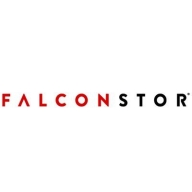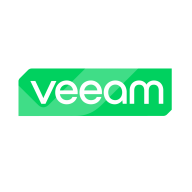

FalconStor VTL and Veeam Data Platform compete in the data management and protection space. Veeam appears to have the upper hand with its comprehensive features and perceived high value, although FalconStor is noted for pricing and support.
Features: FalconStor VTL offers advanced disk-to-disk backup capabilities, automated data protection processes, and a strong focus on virtual tape libraries. Veeam Data Platform integrates backup, recovery, and monitoring solutions, features extensive cloud service integration, and offers robust data management covering diverse systems.
Ease of Deployment and Customer Service: FalconStor VTL offers a straightforward deployment process with responsive customer support, focusing on seamless IT infrastructure integration. Veeam Data Platform provides cloud-native deployment options, offering more flexibility and scalability but potentially requiring a more involved setup. Veeam's customer support emphasizes providing resources and documentation.
Pricing and ROI: FalconStor VTL is noted for its competitive setup cost, translating to quicker ROI due to efficient resource usage in specialized environments. Veeam Data Platform has a higher initial cost but offers long-term value with its extensive capabilities, potentially leading to a longer ROI period. Veeam is often viewed as a pricier yet more comprehensive option.

FalconStor Software, Inc. empowers IT professionals to achieve mastery of their data – an organization’s most precious asset – so they can responsibly push the boundaries of what’s possible in the digital economy. The company’s award-winning flagship solution, FreeStor®, is a modern, comprehensive and easy-to-use global data mastery software platform that gives IT professionals centralized data management control across all their resources to reduce operational costs, lower risk, and avoid technology compromises. FalconStor’s vendor and hardware-agnostic solutions are designed to work with existing investments across complex environments, including legacy data centers, hyper-converged infrastructure, cloud, and hybrids.
Veeam Data Platform ensures comprehensive data resilience by offering secure backups and intelligent data insights, catering to the complexities of modern data management.
Veeam Data Platform empowers businesses with reliable data protection, orchestrated recovery, and streamlined management. Providing peace of mind, it guarantees data is secure, available, and effortlessly recoverable. Organizations benefit from features such as instant recovery, simplified management, and compatibility with virtual environments. While it shines in backup and restore capabilities, it calls for improvements in integration with physical servers and enhanced cyber security features.
What are the key features of Veeam Data Platform?Organizations in industries like finance, healthcare, and manufacturing utilize Veeam Data Platform for critical data management, ensuring business continuity and disaster recovery. Employed in securing both virtual and physical workloads, Veeam integrates cloud storage for enhanced scalability and efficiency.
We monitor all Backup and Recovery reviews to prevent fraudulent reviews and keep review quality high. We do not post reviews by company employees or direct competitors. We validate each review for authenticity via cross-reference with LinkedIn, and personal follow-up with the reviewer when necessary.